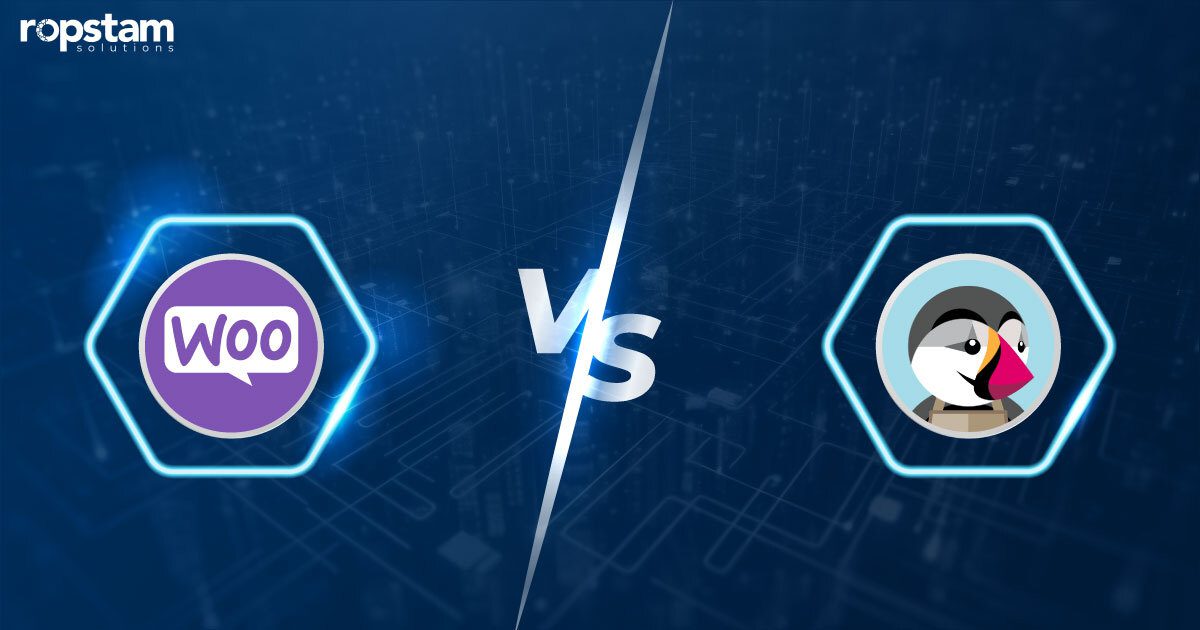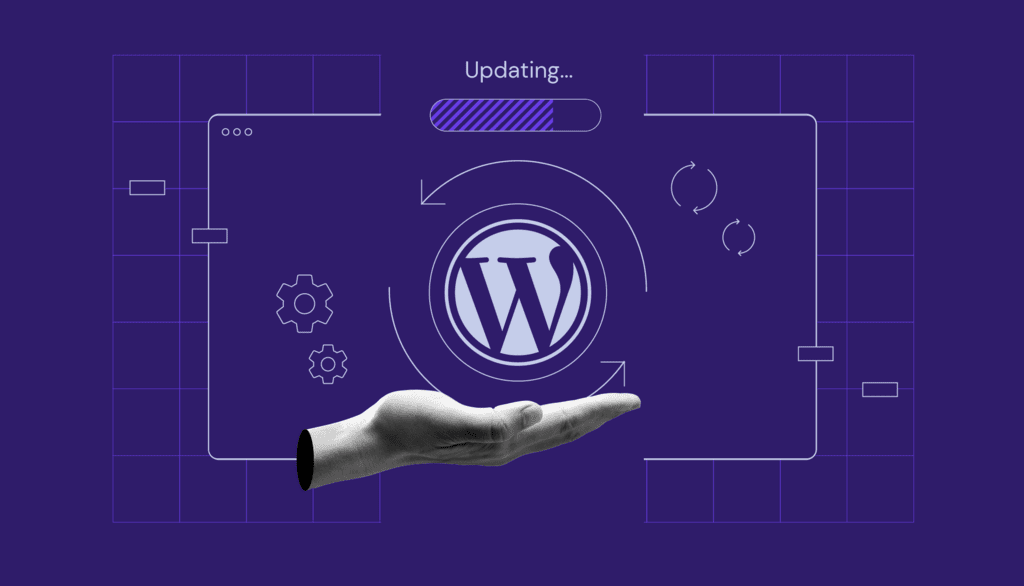If you are looking to start your e-commerce venture, identifying the ideal platform should be the top priority. In this domain, two of the more popular choices are WooCommerce and PrestaShop. The WooCommerce vs PrestaShop debate is an everlasting one, forcing one to compare and analyze the strengths and weaknesses of both of them.
While it is difficult to identify a clear winner, we will help you navigate this landscape with a comprehensive analysis of both platforms in this article.
WooCommerce vs PrestaShop – Quick Overview
Let’s start by talking about how PrestaShop and WooCommerce came about and how they’ve grown over time as popular platforms for online ecommerce stores.
| Features | WooCommerce | PrestaShop |
| Pricing | (Draw 🤝) Free plugin, but additional costs for themes, plugins, and web hosting |
(Draw 🤝) Free core software, but additional costs for modules, themes, and web hosting |
| Ease of Use | (Winner 🏆) Renowned for its user-friendly interface, easy-to-manage content, and products |
A slightly more technical approach is required for customization |
| Learning Curve | (Winner 🏆) Relatively gentle learning curve and many resources available |
Ideal for users who are more technically savvy |
| Security | (Winner 🏆) 18 reported vulnerabilities since 2017 |
69 reported vulnerabilities since 2017 |
| Marketing | Offers marketing-related extensions but largely leaves marketing efforts up to the user | (Winner 🏆) Provides add-ons like PrestaShop Marketing |
| Extensibility | (Winner 🏆) Thousands of plugins and extensions are available, often at lower prices |
Over 4000 extensions available |
What is PrestaShop?
PrestaShop is a renowned, open-source e-commerce solution designed with the precision of a Swiss watch. It enables business owners to launch and manage their online stores with relative ease.
Renowned for its straightforward installation and user-friendly backend operations, PrestaShop is preferred by entrepreneurs stepping into the digital marketplace. Right now, over 200,000 ecommerce stores are active that are made with Prestashop.

PrestaShop offers a comprehensive onboarding experience in collaboration with a few agencies and web hosts, in case you are unfamiliar with e-commerce. The modular nature of this framework design allows for extensive customization through add-ons that cater to a diverse range of business needs.
Moreover, with PrestaShop focus on creating an optimized shopping experience, it helps online store owners to efficiently convert visitors into loyal customers, making it a formidable tool in the eCommerce arsenal.
What is WooCommerce?
WooCommerce, a powerful and popular e-commerce platform, is considered a game-changer for online business. Built on WordPress, it offers an interactive interface that makes setting up and managing your online store a breeze.
Currently, 4.7 million online stores are built with WooCommerce. It’s more than just a shopping cart system; it’s a comprehensive solution that integrates with your existing website, providing a smooth shopping experience for your customers.

One of WooCommerce’s unique advantages is its flexibility. With thousands of plugins and themes available, you can customize your store to suit your brand’s identity and customer needs. It’s also highly scalable, allowing your business to grow along with your customer base.
But that’s not all. WooCommerce’s open-source nature means it’s constantly evolving, with a vibrant community of developers contributing to its growth. This ensures your store stays up-to-date with the latest e-commerce trends and technologies.
PrestaShop vs WooCommerce – Which e-commerce platform is better?
We will feature-wise compare WooCommerce and PrestaShop in detail to help you make an informed decision regarding an ecommerce software:
Pricing:
One of the most important questions one faces in this decision-making process is regarding the overall pricing plans of both platforms. WooCommerce, being a WordPress plugin, is free to use. However, the cost of running an eCommerce store can escalate due to the need for premium themes, plugins, and hosting services.
Similarly, PrestaShop offers free core software, but additional costs can arise from modules, themes, and hosting services. In short, there is no clear winner between these two Ecommerce platforms in this comparison.
Winner: Draw
Ease of use:
WooCommerce, with its WordPress integration, is renowned for its user-friendly interface. It allows users to manage content and products with ease. However, PrestaShop, being more eCommerce-focused, might require a slightly more technical approach for customization and management.
Winner: WooCommerce
Learning curve:
WooCommerce is generally easier for beginners to grasp, with many resources available for self-teaching. Thanks to its innovative interface, WooCommerce’s learning curve is relatively gentle. On the other hand, PrestaShop, while not exceedingly complicated, is ideal for users who are a bit more technically savvy or those willing to delve into the world of eCommerce more deeply.
Winner: WooCommerce
Security:
As an online store owner, ensuring the security of customer data stored on your site should be of paramount importance. The popularity of both WooCommerce and PrestaShop makes them attractive targets for threat actors. When comparing the security incidents of both platforms, 69 PrestaShop vulnerabilities have been identified since 2017.
On the other hand, the number of reported WooCommerce vulnerabilities in the same time period was 18, meaning that WooCommerce takes precedence in this aspect.
Winner: WooCommerce
Marketing
When it comes to marketing, both PrestaShop and WooCommerce provide you with the flexibility to pursue any promotional strategy you choose. However, it’s worth noting that while both platforms offer some marketing tools, they largely leave the marketing efforts up to you.
PrestaShop, for instance, offers several add-ons designed to enhance your marketing efforts. One such add-on is PrestaShop Marketing, a free tool that allows you to link your store’s products with the Google Merchant Center. This can significantly boost your product visibility on search engines, leading to increased traffic and potentially higher sales.
On the other hand, WooCommerce, while not promoting any specific add-ons, does offer a wealth of extensions that can aid in marketing efforts. However, PrestaShop has a slight edge when it comes to marketing tools.
Winner: PrestaShop
Extensibility
If you are looking to access additional features, both WooCommerce and PrestaShop offer countless extensions. While WooCommerce has thousands of such options, PrestaShop’s extensions are more than 4000. However, WooCommerce is the winner in this aspect as well, thanks to the lower prices of its plugins.
Winner: WooCommerce
Pros and cons of PrestaShop
If you are about to pinpoint PrestaShop as your preferred online store builder, you must be aware of the strengths and weaknesses of this platform:
Advantages of PrestaShop
- Tailored for ecommerce stores
- Open-source software
- Out-of-the-box ecommerce functionalities
- Facile management
- User-friendly tool
Disadvantages of PrestaShop
- Difficult upgrade process
- Possible conflict in modules
- Slow loading time
- Expensive modules
- Difficult to set up initially
Pros and cons of WooCommerce
Here, we have compiled a list of advantages and pitfalls of using WooCommerce:
Advantages of WooCommerce
- High level of customization
- Scalability
- SEO-Friendly
- Community Support
- Integration Capabilities
Disadvantages of WooCommerce
- Costs can add up for a full-fledged online store
- Slow loading time
- Security concerns
- Dependence on WordPress
When to choose PrestaShop?
PrestaShop offers a range of advantages that make it an attractive choice in certain scenarios. One of PrestaShop’s key strengths is its extensive functionality out of the box. The platform comes packed with over 600 features and modules that cover essential ecommerce needs like catalog management, customer accounts, and more.
This allows store owners to quickly launch a full-featured online store without having to invest significant time and resources into custom development. PrestaShop is also highly scalable, able to support stores of all sizes from small businesses to large enterprises.
Its architecture is designed to handle high traffic and large product catalogs efficiently. Additionally, the platform’s open-source nature means it can be extensively customized and integrated with third-party tools to suit unique business requirements.
Another major benefit of PrestaShop is its large and active community. As an open-source project, PrestaShop is supported by a global community of developers, designers, and users who contribute to its ongoing improvement and expansion. This community provides a wealth of resources, add-ons, and support that can be invaluable for store owners.
Given these strengths, PrestaShop is an excellent choice for online businesses that require a robust, full-featured ecommerce solution with room to grow and customize. It’s particularly well-suited for merchants with large product catalogs, complex business rules, or a need for deep integrations.
The platform’s user-friendly administration panel, awesome performance, and rich feature set also make it a strong contender for small to medium-sized businesses looking to establish an online presence quickly.
When to choose WooCommerce?
Over the years, WooCommerce has firmly established itself as a premier ecommerce platform, powering over 30% of all online stores worldwide. This widespread adoption is a testament to the platform’s strengths and the specific scenarios where it shines as the optimal choice.
A key advantage of WooCommerce is its deep integration with WordPress, the internet’s most ubiquitous content management system (CMS). This connection allows online store owners to seamlessly blend their ecommerce offerings with a robust, flexible, and familiar content platform.
By leveraging WordPress’ intuitive interface, extensive plugin ecosystem, and thriving developer community, WooCommerce users can create cohesive, content-driven shopping experiences that engage customers and strengthen their brand.
Another strong suit of this ecommerce plugin is its remarkable flexibility and customizability. With thousands of free and premium extensions available, the platform can be extensively tailored to meet the unique requirements of any online business.
Whether it’s integrating with specialized third-party services, offering complex product types, or providing unique checkout and shipping options, WooCommerce’s modular architecture enables limitless possibilities for store owners to differentiate their offerings.
Based on these advantages offered by this platform, WooCommerce stands out as an excellent choice for online businesses that are already part of the WordPress ecosystem or those seeking to leverage its benefits. It is also preferred by online merchants who prioritize content-driven experiences, require a high degree of customization, or anticipate significant future growth in their operations.
Get e-commerce store development services from Ropstam Solutions
With the e-commerce field rapidly evolving, one needs to be aware of the recent online shopping trends and modern e-commerce platforms. This article provides an intricate comparison between two powerful e-commerce solutions, PrestaShop and WooCommerce, to help you make an informed decision.
Selecting the ideal development team goes a long way toward the success of your online store. At Ropstam Solutions, we have a dedicated team of Shopify developers with years of experience in this field. Get in touch with us today, and let us turn your e-commerce vision into a reality.














